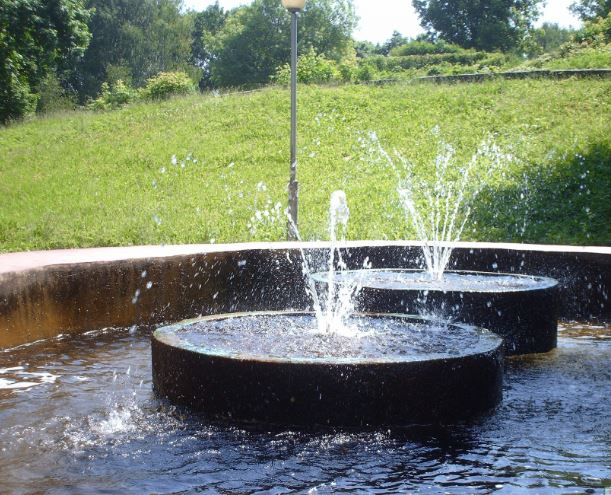 Using pond aerators and fountains is a crucial way to help keep your pond water clean and healthy. They help circulate the water, prevent stratification, and improve water quality.
Using pond aerators and fountains is a crucial way to help keep your pond water clean and healthy. They help circulate the water, prevent stratification, and improve water quality.
Circulation
Using pond aerators and fountains can help keep your pond’s water clean and oxygenated. Not only does oxygen help your fish, but it also helps the organic cleaning processes in your pond. Without circulation, your pond’s ecosystem will suffer. There are two types of pond aerators. They are surface aerators and sub-surface aerators. They both use a pump to draw air into the water. They then propel the air through diffusers at the bottom of the pond. The result is a circulation system that mixes the entire water column. Surface aerators work well in shallow ponds. They are often installed in parks and golf courses. They help create circulation by breaking up the water as it splashes down. They also help make a ‘boil’ on the pond’s surface. They also allow the mixing of the different temperature layers in the pond. Sub-surface aerators are more effective in deeper ponds. They are operated by an air compressor mounted on the pond’s shore. The compressor pumps air into the water, pushed through diffusers at the bottom of the lake.
Prevent stratification
Using pond aerators and fountains can help keep your pond healthy and attractive. When water temperature changes and different layers develop, stratification can occur. If left unchecked, stratification can cause a range of problems. These problems include algae growth, fish kills, and foul-smelling ponds. Stratification occurs when bodies of water naturally stratify based on temperature, density, and oxygen levels. The bottom layers of water are usually the least oxygenated. These layers do not mix with the surface layer—the lack of mixing causes oxygen depletion, which can lead to an ecosystem decline. The best way to prevent stratification is to maintain adequate oxygen levels. There are two ways to do this: diffuse aeration and mechanical circulation. Diffused aeration works by injecting air into the bottom of the pond. The air bubbles rise to the surface, forming a current. This current keeps the water circulating. Ideally, diffusers are placed strategically throughout the bottom of the pond. Aerators and fountains help prevent stratification, but only sometimes. The pond’s depth will also play a factor. Shallow ponds may not stratify because the surface layer’s temperature matches the deeper water’s temperature.
Recirculate water
Using pond aerators and fountains can enhance a pond’s aesthetics while increasing its aquatic life’s health. While there are many devices on the market, choosing the one that best suits your pond’s needs is essential. The pond’s size and the water’s depth are the two primary factors that determine whether or not an aerator is needed. A pond with more than one foot of depth might need a larger device than a pond with only a few feet of depth. Stratification is caused by accumulated sediments and nutrients that contribute to algae blooms. The longer stratification persists, the greater the chance that fish will die. Aerators and fountains can also help prevent stratification, which can cause a foul odor and algae blooms. There are two main types of pond aerators. The first is a mechanical circulator, which brings deep water to the pond’s surface. The other is a diffuser, which breaks air into tiny bubbles. Bubbles diffuse oxygen into bottom waters and can be more effective in deeper ponds.
Improve water quality
A well-designed aeration system in your pond will protect the health of the aquatic life and the downstream water quality. Aeration will increase the dissolved oxygen concentration in the water and promote circulation in the pond. Adding oxygen in ponds reduces algae blooms and protects the health of aquatic life. Several different types of aerators can be used to improve water quality. Every kind of aerator has its uses and benefits, so it is essential to choose the right one. A primary type of lake aerator is the air-diffused system. This system sends compressed air through a windmill to an underwater tube. This creates a circulation that lifts the bottom water to the surface. The bubbles from the perspective diffuse into the bottom water and break up the stratification layers. This slows the release of nutrients and reduces hydrogen sulfide, a gas that causes a rotten egg odor.






